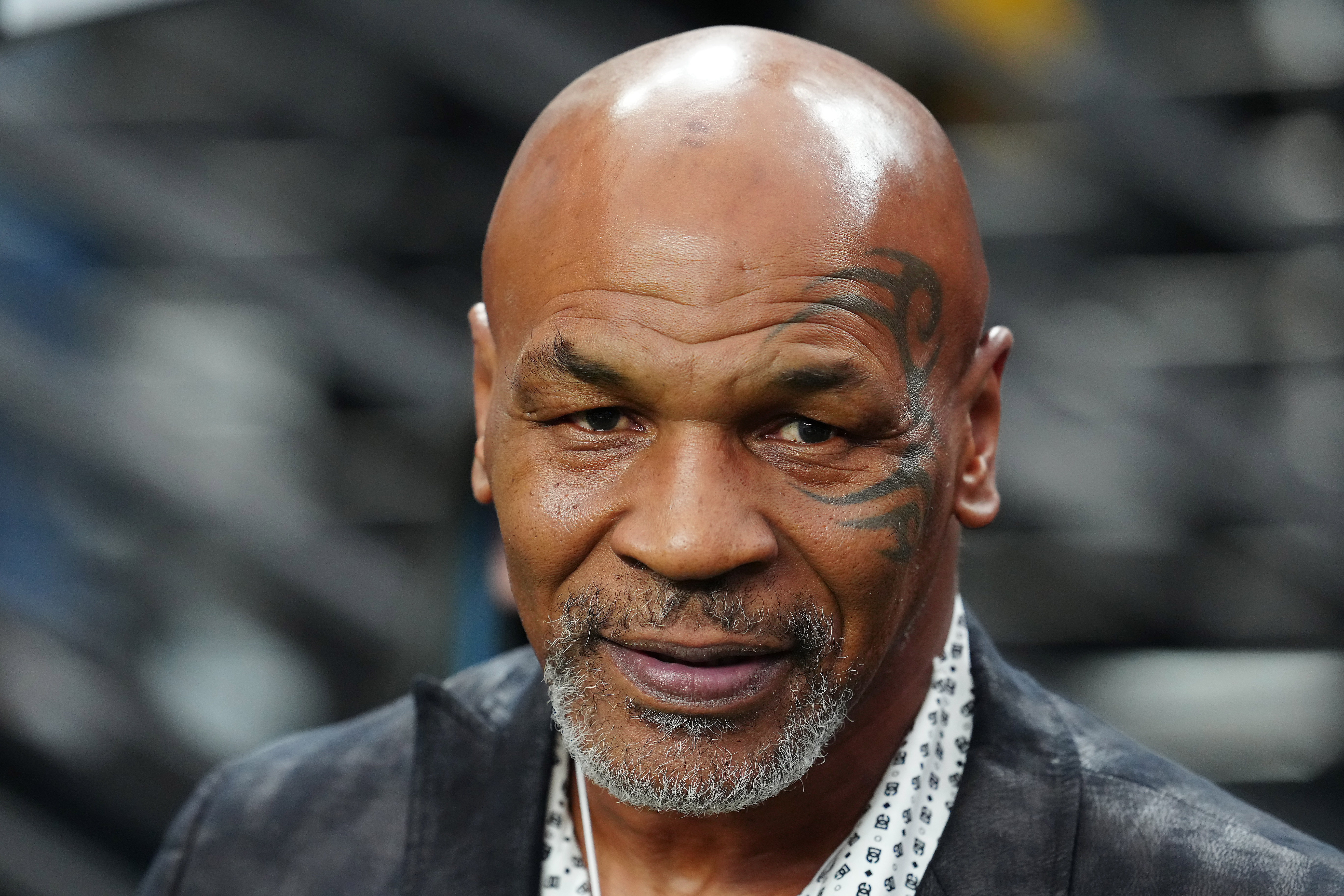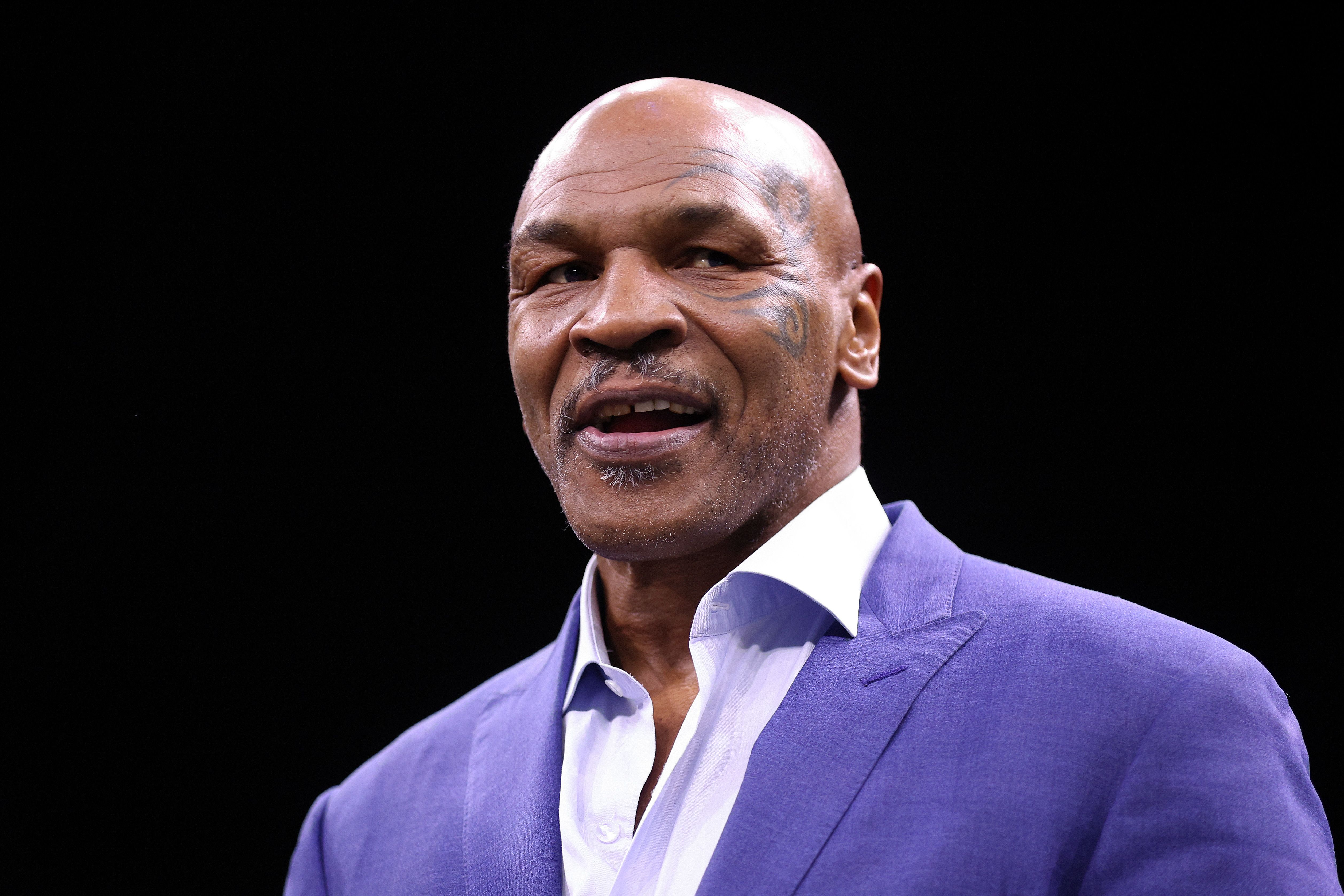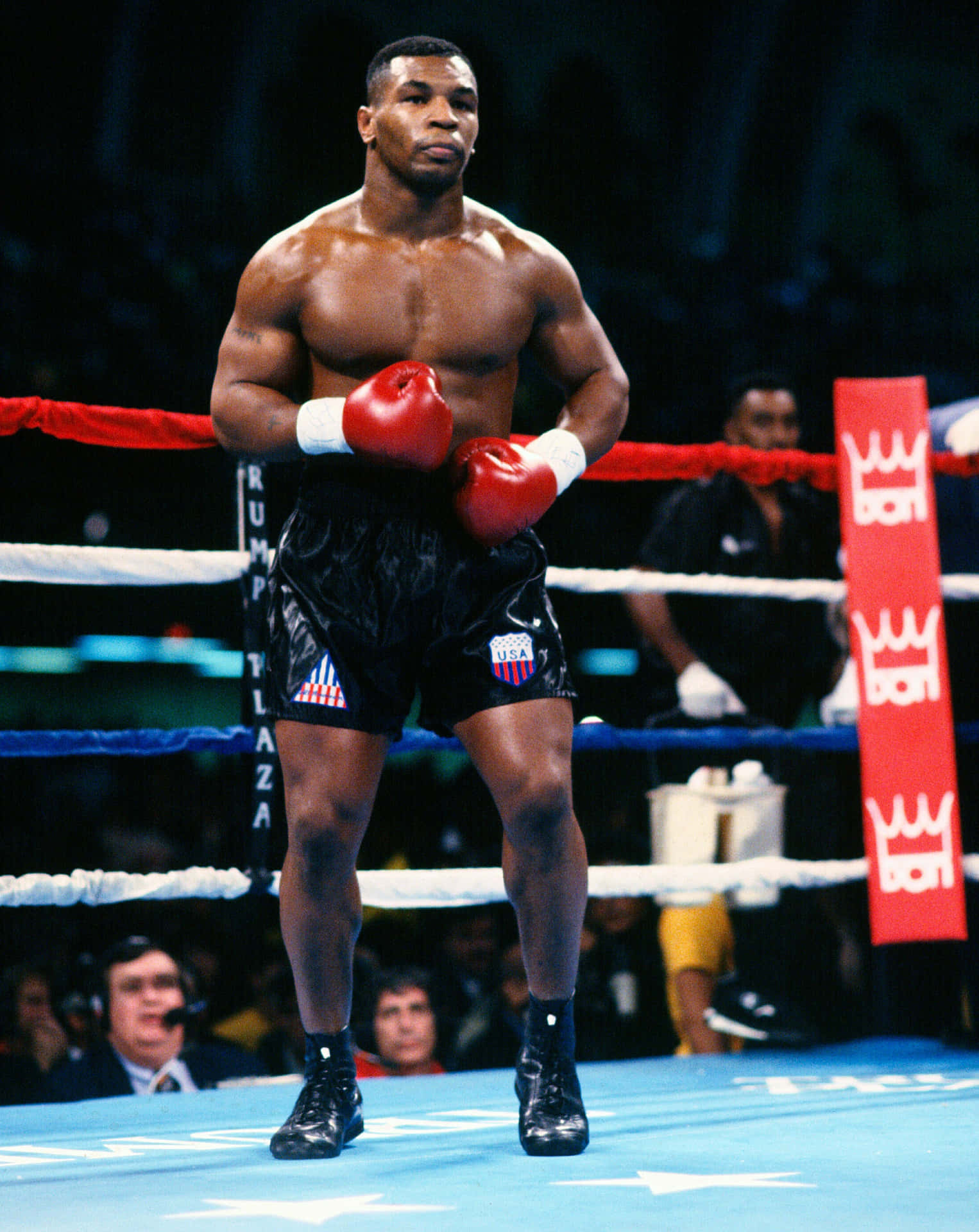When you think about heavyweight boxing, you might picture towering figures, their arms stretching out like tree branches. It's a sport, you know, where size often seems to be a big advantage. Yet, there's one name that always pops up, a legend who, by many accounts, seemed to defy the typical mold of a giant heavyweight: Mike Tyson. People often wonder, was he really the shortest heavyweight champion ever? It's a question that, frankly, sparks a lot of conversation among boxing fans and even casual observers, even today.
His presence in the ring, you see, was just so immense, so powerful, that his physical measurements sometimes felt secondary to the sheer force he brought. The way he moved, the explosive punches he delivered, they all made him seem larger than life, almost. This curiosity about his height, it really highlights how much of an impact he made, perhaps more than any other fighter of his time, or so it seems.
This discussion about Mike Tyson’s stature, it's not just about numbers; it's about understanding how a fighter, seemingly at a physical disadvantage, managed to dominate a division typically ruled by bigger men. It also touches on his unique story, a life that's been explored in various ways, like the recent television miniseries created by Steven Rogers, which, you know, brought his dynamic and sometimes controversial journey to new audiences. So, let's take a closer look at this fascinating aspect of his incredible career.
Table of Contents
- Mike Tyson: A Brief Look at His Life
- Understanding the Heavyweight Division
- Mike Tyson's Height and Reach: The Real Numbers
- Comparing Tyson to Other Heavyweights
- Was He the Shortest? The Verdict
- Impact of Stature on His Fighting Style
- Tyson's Legacy and His Height
- Frequently Asked Questions About Mike Tyson's Height
Mike Tyson: A Brief Look at His Life
Mike Tyson, born in Brooklyn, New York, had a rather challenging start to life, to say the least. His path, you might say, was set on a different course when he met Cus D'Amato. This legendary boxing trainer, as a matter of fact, discovered Mike when he was just 13 years old. Cus, you know, saw something truly special in the young boy, a raw talent that was pretty much unmatched.
D'Amato, in a way, became a father figure to Mike. He gave him more than just boxing lessons; he instilled discipline, honed his skills to an incredibly sharp edge, and, yes, even helped shape that formidable ego that became so characteristic of "Iron Mike." This guidance, it truly transformed Mike into the youngest heavyweight champion of all time, a feat that, arguably, seemed almost impossible for someone so young.
His professional career, it just exploded onto the scene in the mid-1980s. He was a force of nature, a whirlwind of speed and power, knocking out opponent after opponent with incredible efficiency. His fights were, you know, must-watch events, drawing huge crowds and capturing the imagination of people all over the world. He became, quite literally, a global phenomenon, and that, is that.
Personal Details and Bio Data of Mike Tyson
| Detail | Information |
|---|---|
| Full Name | Michael Gerard Tyson |
| Nickname(s) | Iron Mike, Kid Dynamite, The Baddest Man on the Planet |
| Born | June 30, 1966 (currently 57 years old as of late 2023) |
| Birthplace | Brooklyn, New York, U.S. |
| Nationality | American |
| Stance | Orthodox |
| Height | 5 ft 10 in (178 cm) |
| Reach | 71 in (180 cm) |
| Boxing Record | 50 wins (44 KOs), 6 losses, 2 no contests |
| Major Titles | WBC, WBA, IBF Heavyweight Champion |
| Trainer(s) | Cus D'Amato, Kevin Rooney, Richie Giachetti, Jay Bright, Jeff Fenech |
| Years Active | 1985–2005 (Professional Boxing), 2020 (Exhibition) |
Understanding the Heavyweight Division
The heavyweight division in boxing, it's pretty much the sport's premier weight class. There's no upper weight limit, you see, which means fighters can be incredibly large. This lack of a ceiling, it really sets it apart from other divisions, where boxers have to meet specific weight requirements, or so it seems.
Typically, a professional boxer is considered a heavyweight if they weigh over 200 pounds (about 90.7 kg). This means you can have fighters who are, say, 210 pounds standing 6 feet tall, and then others who are 260 pounds and well over 6 and a half feet tall. The variety in size is, well, quite remarkable, and that's just part of its appeal, apparently.
Over the years, the average height of heavyweight boxers has, in a way, tended to increase. Back in the day, fighters like Rocky Marciano were considered big at around 5 feet 10 inches. But now, it's very common to see heavyweights standing 6 feet 5 inches or even taller. This shift, it really makes the question about Mike Tyson's height even more interesting, you know, considering the trends.
Mike Tyson's Height and Reach: The Real Numbers
So, let's get down to the actual measurements for Mike Tyson. He stood at 5 feet 10 inches tall, or about 178 centimeters. His reach, which is the measurement from fingertip to fingertip with arms outstretched, was 71 inches, or 180 centimeters. These numbers, when you think about them, are pretty much on the shorter side for a heavyweight, especially by today's standards, and that's a fact.
Now, for context, most modern heavyweights are, you know, somewhere between 6 feet 3 inches and 6 feet 7 inches tall. Their reaches can easily extend into the 80-inch range. So, when you put Tyson's numbers next to those, it's clear he wasn't, by any stretch, a towering figure in the ring. He was, in a way, a bit of an anomaly in terms of physical dimensions for his division, and that, is that.
Despite this apparent disadvantage in height and reach, Tyson, you know, turned it into a weapon. His shorter stature meant he had to get inside his opponents' reach, which, in turn, forced him to be incredibly aggressive and fast. This physical reality, it pretty much shaped his entire fighting strategy, making him, arguably, even more dangerous. He just had to be quicker, and, well, he was.
Comparing Tyson to Other Heavyweights
When we look at Mike Tyson next to other famous heavyweights, his height really stands out. Take, for instance, Lennox Lewis, a dominant champion from a later era. Lewis was a towering 6 feet 5 inches, with a reach of 84 inches. That's a huge difference, you know, in physical presence alone. Wladimir Klitschko, another long-reigning champion, was even taller at 6 feet 6 inches, with an impressive 81-inch reach, or so it seems.
Even legendary figures like Muhammad Ali, while not as tall as Lewis or Klitschko, still stood at 6 feet 3 inches with a 78-inch reach. So, you can see, Tyson was consistently giving up significant height and reach to many of the sport's greats. This wasn't just a slight difference; it was, you know, a pretty substantial gap that he had to overcome in every single fight, almost.
However, it's also worth looking at heavyweights from earlier eras. Rocky Marciano, for example, who was an undefeated champion, was also 5 feet 10 inches tall. Joe Frazier, another legendary fighter known for his relentless pressure, was 5 feet 11 inches. So, while Tyson was short for his time, he wasn't, you know, completely alone in being a shorter heavyweight champion in boxing history. These comparisons, they really put things into perspective, don't they?
Was He the Shortest? The Verdict
So, was Mike Tyson the shortest heavyweight champion? The straightforward answer is, no, not quite. While he was undeniably short for a heavyweight, especially in the modern era, there have been other champions who were of similar or even slightly shorter stature. As we just mentioned, Rocky Marciano, for instance, shared Tyson's 5 feet 10 inches height. This makes Marciano, you know, a key point of comparison when talking about shorter heavyweights, as a matter of fact.
Even going further back, some sources list Jack Dempsey, a celebrated champion from the early 20th century, at around 6 feet or just under, but some historical records can vary a little. The point is, Tyson wasn't an absolute outlier as the shortest ever, but he was certainly among the shortest champions of his generation and in the sport's recorded history. This distinction, it's pretty important to make, you know, for accuracy.
What makes Tyson's case so compelling, though, isn't just his height, but how he used it. His shorter frame, it pretty much forced him to develop a unique and incredibly aggressive style. He couldn't rely on jabbing from a distance like taller fighters. Instead, he had to get in close, which, ironically, made him even more exciting to watch. It's almost as if his "disadvantage" became his greatest strength, or so it seemed, in some respects.
Impact of Stature on His Fighting Style
Mike Tyson's height, or rather his relative lack of it for a heavyweight, played a really big part in shaping his iconic fighting style. He couldn't just stand back and pick off opponents with long jabs. No, he had to, you know, get right into the thick of it, and that meant developing a way to close the distance quickly and safely. This led to his famous "peek-a-boo" style, taught to him by Cus D'Amato, which was, quite frankly, revolutionary for its time.
The peek-a-boo style involved keeping his hands high, tucked close to his face, and using constant head movement. This wasn't just for defense; it was, you know, a way to weave and bob, making him a very hard target to hit, while simultaneously allowing him to slip inside his opponents' longer reaches. He'd duck under punches, then explode upwards with devastating hooks and uppercuts. It was, arguably, a masterpiece of offensive and defensive coordination, and that's just a little bit of what made him so special.
His shorter stature also contributed to his incredible explosiveness. Being lower to the ground, he could generate immense power through his legs and core, transferring it into his punches. This meant that even though he was shorter, his punches carried incredible concussive force. He was, you know, a compact wrecking ball, really. This blend of speed, power, and clever tactics, all influenced by his physical build, made him a truly unique and terrifying opponent for anyone in the heavyweight division, and that's the truth of it.
Tyson's Legacy and His Height
Mike Tyson's height, or his distinctive lack of towering stature, has, in a way, become a part of his legendary story. It's a detail that, you know, often gets brought up when people talk about his incredible achievements. The idea of a shorter man dominating a division of giants just adds another layer to his mystique. It makes his accomplishments seem even more impressive, almost defying the physical norms of the sport, or so it appears.
His story, including the challenges he faced and how he overcame them, continues to fascinate people. This is part of why his life and career have been the subject of various media projects. For instance, the television miniseries "Mike," created by Steven Rogers, explores the dynamic and often controversial story of Mike Tyson. Such productions, you know, keep his name and his unique journey relevant for new generations, and that's pretty cool.
Even today, when you discuss heavyweight boxing, Tyson's name comes up as an example of how skill, strategy, and sheer will can, you know, overcome perceived physical limitations. His height was never a barrier to his greatness; rather, it became a catalyst for the development of one of the most exciting and effective fighting styles the sport has ever seen. It just goes to show that, sometimes, the biggest impact comes from unexpected packages, and that's the honest truth.
Frequently Asked Questions About Mike Tyson's Height
How did Mike Tyson's height affect his fighting style?
Mike Tyson's shorter height for a heavyweight, you know, pretty much forced him to develop an aggressive, in-fighting style. He used constant head movement and quick bursts to get inside his opponents' longer reaches. This approach, often called "peek-a-boo," allowed him to deliver powerful, short-range punches, making him, arguably, incredibly effective despite his stature. It was, you know, a brilliant adaptation.
Were there any other heavyweight champions shorter than Mike Tyson?
While Mike Tyson was definitely on the shorter side for a heavyweight, he wasn't, you know, the absolute shortest champion in history. Rocky Marciano, for example, who was an undefeated heavyweight champion, also stood at 5 feet 10 inches, just like Tyson. So, there have been others who were of similar or even slightly shorter stature over the long course of boxing history, and that's a fact.
What was Mike Tyson's reach compared to his height?
Mike Tyson's reach was 71 inches, which is about 180 centimeters. His height was 5 feet 10 inches, or 178 centimeters. This means his reach was, you know, just a little bit longer than his height, which is fairly typical for boxers. However, compared to most modern heavyweights, his reach was considerably shorter, making his ability to land punches even more impressive, or so it seems.
So, while Mike Tyson wasn't the absolute shortest heavyweight champion in boxing history, he was, without a doubt, one of the most impactful and, you know, visually distinct. His stature, far from being a weakness, became a fundamental part of his legendary fighting approach, a style that captivated millions and, frankly, changed the game. It just goes to show that true greatness, it really comes in all shapes and sizes, doesn't it? To learn more about boxing history and its incredible figures, you can explore other articles on our site. You might also be interested in this page about famous boxing matches.
For more detailed boxing statistics and records, you can check out resources like BoxRec, which, you know, provides comprehensive data on fighters like Mike Tyson.
Related Resources:



Detail Author:
- Name : Ozella Reilly
- Username : meagan.schaefer
- Email : [email protected]
- Birthdate : 1972-11-25
- Address : 21031 Vince Parkway Apt. 026 Langworthhaven, DC 01504
- Phone : +1 (269) 462-4587
- Company : Yundt-Gaylord
- Job : Aerospace Engineer
- Bio : Consequatur eos libero pariatur quo. Quia error non nobis repellat id est. Facilis similique tempore consequuntur est aut libero.
Socials
twitter:
- url : https://twitter.com/anienow
- username : anienow
- bio : Est labore quos iste aliquid. Libero nihil necessitatibus rerum quia. Molestiae architecto non distinctio quibusdam. Expedita dolores excepturi ut quis.
- followers : 2978
- following : 44
linkedin:
- url : https://linkedin.com/in/amiya_nienow
- username : amiya_nienow
- bio : Rem voluptatibus temporibus at.
- followers : 4671
- following : 1512
instagram:
- url : https://instagram.com/nienowa
- username : nienowa
- bio : Velit voluptates voluptatem saepe iure suscipit. Aut cumque aut odio harum.
- followers : 690
- following : 428
tiktok:
- url : https://tiktok.com/@amiya6250
- username : amiya6250
- bio : Eius nemo est repudiandae sit eum ut. Corrupti nihil qui aliquid sit.
- followers : 4992
- following : 759
facebook:
- url : https://facebook.com/nienow1997
- username : nienow1997
- bio : Facilis cupiditate voluptates hic.
- followers : 6915
- following : 2360